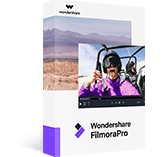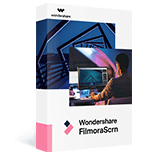- Audio Editing Guide
10 Best Audio Mixer Software to Trim Your Sound Easily
You may be a musician who wants to record his/her own music, or just a person wanting to develop his custom ringtone. In either case, a physical or virtual audio mixer is required, whether it be analog or a dedicated audio mixer software.
But you need to have some technical knowledge to make its optimal use and funk up your music/sound.
Here we are to give you the knowledge that you need and some amazing audio mixer software that could be perfect for you. So buckle up, and get ready to level up the harmoniousness of your creativity!
You will Learn :- What to consider while choosing an audio mixer software?
- 10 Best Sound/Audio Mixer Software
- What is an audio mixer?
- Application of audio mixing
- What does an audio mixer do?
- Basic terminologies and components
- Why Audio mixer software?
What to consider while choosing an audio mixer software?
Before starting off with the audio mixing activity itself, one must be able to determine which audio mixer software is best for them with respect to their availability of resources or usability. Here are some of the factors to consider while opting for an audio mixer software:
- Check whether the software is paid or free.
- Check whether the limited features offered in a trial/free audio mixer software are enough to satisfy all your needs.
- Choose the paid or the free one depending on the extent of audio mixing quality you want.
- Look for an easy user interface.
- Look for the software compatibility with your existing operating system.
- Check for the availability of tutorials related to the use of audio mixer software that you want to opt for better guidance.
- Look for the basic or advance functions support in the audio mixer software that you choose depending upon your usability.
- Whether the software is available online or you need to install the version.
10 Best Sound/Audio Mixer Software
Whether you are pursuing a music career, making a video for a movie clip or merely creating some hard-core beats for fun, you'll be needing a good sound mixing software.
Selecting an audio mixer software that's perfect for your requirements and available resources is not an easy task.
Some of them are for free while some charge for it, some offer limited features while some are specific to a certain operating system, the options and availabilities are endless and choosing among them is a hell of a daunting task.
But no need to stress out because we are here to take your burden on our shoulders and help you choose exactly what you want! So sit back and relax!
1. Wondershare Filmora
This software is a perfect tool for newbie that provides a user-friendly interface and promises a professional outcome in the end.
Pros
- Easy-to-use software
- Support any file format. Hence, no file conversion needed.
- Imports file in original format and mix the audio with built-in tools.
- Built-in effects greater than any other software
- Easy to learn
- Audio sync option while editing
Audio formats support: all (import/export and audio/video) file formats
Compatibility: windows 7 to windows 10 sound mixer and mac OS
Price: free and paid
If you are facing any trouble regarding audio mixing through an audio mixer software then here's a video tutorial for Filmora software:
You can download for free and follow the video guide step by step. Check below video:
2. Adobe Audition

It is primarily designed for professional users having several features like multi-track editing and mixing, Auto Ducking, clip editing.
Pros:
- Availability of a vast range of features
- Attractive user interface
- Good for video sounds or voice-overs editing overall including sound mixing as well.
Cons:
- A little too complex for a newbie to understand.
- Not good enough for music productions
- This software is subscription-based.
Audio formats support: MP3, WMA, WAV, AIFF, AC-3, PCM, AIFC and more
Compatibility: Mac OS, Windows
Price: free and paid both
3. Logic Pro X

This software is suitable for both, professional users and beginners. It combines all the basic and advanced features in it including Flex Time, automatic time matching of different tracks, Flex Pitch, arpeggiator etc.
Pros
- Works wonderfully on Mac
- Rich Featured software and several plugins
- Singular notes control
- Tutorial easily available
Cons:
- Mac only
- Expensive
Audio formats support: WAV, AIFF, CAF, PCM, ALAC, AAC, MP3 and more
Compatibility: macOS
Price: Paid
4. Audacity

A free, open-source and features rich software perfect for both profession and beginner users. Its offers multiple effects and tolls like analysis, envelope, time-shift tools etc.
Pros
- Absolutely free
- Cross-platform
- Easy to use
- Features for beginner and pro-level, both
- Online community available for help
Cons:
- Not very appealing UI
- May face crashes on Mac
Audio formats support: MP3, MP4, AIFF, PCM, WMA, AC3, AMR and more
Compatibility: Linux, Windows and macOS
Price: free
5. Reaper

This is one of the few software that facilities with bunch of feature in such an affordable price. It has multiple tracks, multichannel support, real-time, non-destructive effect application, pitch-shifting and time-shifting features.
Pros
- Feature-rich
- More affordable than other audio mixer software
- Detailed tutorials available online.
Cons:
- Not very appealing UI as of LPX or Audition.
- Not suitable for beginners.
Audio formats support: ACID, AIFF, MP3, MPEG WMV and more.
Compatibility: Linux, Windows and macOS
Price: free and paid, both
6. Fl Studio

It is one of the top-notch software used for sound mixer and editing purposes. It supports pitch shifting, time stretching and multi-track recording, 80 plug-ins, VST standards, delay compensation etc.
Pros
- Comes with abundant Features
- Works great for music productions
- Supports 3rd party plugin.
Cons:
- Not very appealing UI
- May be intimidating for beginners
Audio formats support: AIFF, DS, MP3, OGG, WAV and more
Compatibility: Windows and macOS
Price: free and paid, both
7. SoundAtion

It is a browser-based software that facilitates feature like non-destructive Multi-track audio editing, dynamic mixing, several effects selection and EQ across multiple tracks.
Pros
- Free digital audio Workstation (DAW)
- Works wonderfully for sound effects, podcasting and general-purpose sound task
- Supports 3rd party plugin.
Cons:
- Automation not featured in a free trial
- Limited audio quality in a trial version
Audio Formats Support: MP3 and WAV
Compatibility: any operating system
Price: free and paid, both
8. HyaWave

It offers functions like cutting with an online audio cutter, paste and trim audio and supports 18 filters, effects, and publication through URL and social media with minimalistic user interface.
Pros
- Easy and simple user interface
- Audio filter customization
- Has a built-in audio player, recorder and editor
Audio formats support: MP3, WAV and more
Compatibility: any operating system
Price: free
9. Twisted Wave Online

It is an online software almost equally compatible with many paid sound mixer and editing tool. It supports uncompressed audio recording, VST effects and several core effects as well.
Pros
- Cloud storage of edited audio, saving the disk space
- Sampling rate conversation
- Online and free
Cons:
- Upload file in mono in a trial version
- Supports 5 minutes audio clip in a trial version
Audio formats support: MP3
Compatibility: any operating system
Price: free and paid, both
10. Bear Audio Tool

This is an on-line browser-based software that can edit the files from our local storage and you don't have to upload the audio to their server. It has ample own music library, effects and import options. It can cut, apply effects, trim etc.
Pros
- Copyright-free
- Import audio directly from URL or social media domains.
- Features rich
Cons:
- Not suitable for very advanced usage
Audio formats support: MP3, OGG, WAV, WMA, M4R, AAC and OGG,
Compatibility: any operating system
Price: free and paid, both
What is an audio mixer?
An audio mixer is used for several significant purposes. It is known with several names. Whether it be called as a mixing desk, soundboard, mixing board, audio mixer or mixing console, all have a coherent purpose. The sole purpose of an audio mixer is to manage, either the live or recorded event.
Audio mixing, as the name suggests, is the process of mixing multiple sounds and consolidating into one or more channels.
This process is performed in a way that manipulates or enhances the dynamics, source's volume level, panoramic position and frequency content. The end moto of this creative and aesthetic treatments is to present the audio which is appealing to the listeners.

Application of audio mixing
Audio mixing can be used in many fields and it's very common in our daily life, such as:
- Music
- Live sound
- Film
- Television
What does an audio mixer do?
As mentioned above, the primary function of an audio mixer is to mix more than one audio signals and combine them together into one or more output signals.
As an example, you may think of an audio mixing engineer; let's say, orchestra conductor, who ensures that all the segregated sound sources mix together into one harmonious soundtrack.
For this, he/she will use an audio mixer for filtering and optimizing sound by level adjusting, developing monitor feeds, using equalization and effects for sound enhancement.
All of this process is performed by a mixing engineer who operates either a digital audio workstation or a mixing console.
Basic terminologies and components
It is necessary to know at least somewhat about the fundamental terminologies to decipher the specifications and feature of an audio mixer. Here you'll get to know what it takes to be able to distinguish among different audio mixers and their respective software.

Channel:
It is basically a signal path. A mixer with several channels integrated with it allows several things to be integrated and routed through it. Channels are made to accept the microphones, preamps, amplifiers and signal processors.
Channel Strip:
It is a cluster of controls and circuits that works together on a specified mixing channel to manipulate the audio that passes through it. Some of which includes the following:
Input jack:
It is the jack where any external instrument, like guitar, microphone etc., integrates with the mixer. The noise and interface are minimized to maximum extent by balancing the XLR inputs. A quarter-inch TRS connector or RCA are connected to other inputs.
Microphone preamp:
It produces weak mic signals by the raise of line-level strength for processing.
Equalization:
Often abbreviated as “EQ”, is used to adjust the frequency response of a signal.
Dynamics:
This process is used to perform grating and compressing.
Routing:
It directs the incoming signals to external devices or mixer circuitry.
Fader:
Its fundamental objective is to control the inputs and outputs of a channel.
Meter:
Kind of a gauge or interface that presents the channel output.
I/O:
I/O is abbreviated as inputs/outputs on a mixer in this regards. The number and category of I/O will depend on the use of a mixer.
Now, let's understand the scenario of live mixing.
Such a mixer is needed which is enough to handle the outputs needed to connect the mains, microphones, other devices that connect to it and monitor speakers. The devices that are a part of a recording process or signal chain must also be included while calculating I/O for studio mixers.
Such inputs/outputs include headphones, effects processors, monitor speakers, signal processors and other instruments as well that uses direct injection (DI) boxes to connect to the mixer.

Buses:
It can be understood as circuits' intersection where the outputs from different channels meet. The signal channels are routed to a specific bus or set of busses. The main mixer output is sent to a recorder or a speaker by the master mix bus.
Auxiliary buses, often known as aux buses or aux sends, are often fed by the channel's volume controls with which they are connected and then send those signals through their own output jacks. This is called as post-fader sends which are used to send the mixes of monitor speakers, signals to headphones or effects processors.

Groups:
Several channels in a mixer often offer a group function that allows one to process and control various channels simultaneously. Its works are similar to that of sub-mixer that shares the coherent signal routing and processing and provides the ease in controlling master bus since a single fader is used to control all the channels.
Inserts:
External and add-on sound processors, such as equalizers and compressors, are connected with the help of a channel insert.
Direct Output:
These feed mixer's preamplifiers output to recording systems and external sound interfaces.
Cue System:
Cue systems allow listening on the specified channels without the mixer's output being affected. This usually allows the signal to listen either prior to fading manipulation or after that.
Why Audio mixer software?
Back in the early days, analog audio mixers were the only option available to perform sounding mixing. But the rise of the era of the 21st century brings more options for easy and optimized audio mixing by sound mixer software.
All you need is a configured laptop, audio mixer software and merely a control surface to jump into this world whilst being within the budget!
This audio mixer software is easily available to do literally everything or even more than what a physical mixer could have done. Several sound mixer application is available to start off with basic sound mixing using your smartphones or even tablets.
For the sake of recording, software-based mixers allow easy integration with the virtual instruments, drum loops, sample and several other additions in your productions. The use of advanced MIDI functions with a digital audio workstation (DAW) lets you enlighten with a whole new world of possibilities to elevate your sounds/music to the next level.
Final verdict: Have you decided your audio mixer software?
The usability and optimality of a sound mixer online software depend solely on the extent of application, available resource and OS compatibility.
But, it can be said without a doubt that Wondershare Filmora is the most user-friendly with immense flexibility in terms of uses and compatibility. Its broad-scale usability and promising results make it outshine the most among all other audio mixing software.
Bring up your video to a professional level with straightforward tools.
Try It Free Try It Free







Max Wales
staff Editor
0 Comment(s)